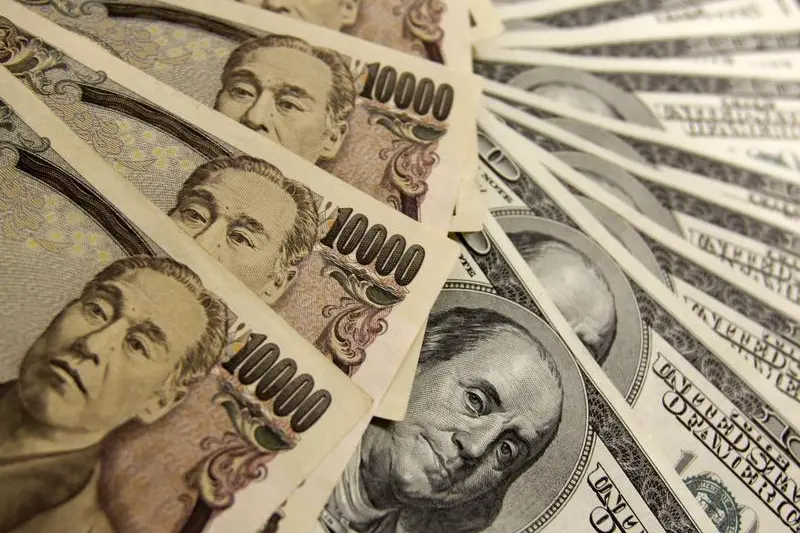PHOTO
(The author is a Reuters Breakingviews columnist. The opinions expressed are her own.)
LONDON - Yen weakness is set to provoke more tears than smiles across Japan Inc this time around. A sliding currency brings benefits for exporters. Right now, however, it’s compounding the pain from surging raw material prices.
The yen this week tumbled to its weakest level against the dollar in nearly three years, pushing it to a 10% fall for the year. Federal Reserve Chair Jerome Powell’s plans to reduce the pace of asset purchases, and the subsequent rise in U.S. bond yields, are partly responsible. Recently, though, the Japanese currency has also slipped against the euro.
All this boosts the competitiveness of companies shipping goods and services overseas, but it has the drawback of accentuating a steep rise in the price of imports, especially commodities and other dollar-denominated supplies. Past currency weakness is already filtering through. An index that tracks the yen value of wholesale import prices leapt a record 31% in September from a year earlier, according to Bank of Japan data released on Tuesday. The cost of lumber and wood products rose nearly 72%. Petroleum, coal and natural gas prices also increased 78%, an acute problem given how reliant Japan is on bringing in energy from abroad.
Further yen weakness will boost import costs even if raw material prices stabilise. Japanese businesses are already feeling the squeeze. Nippon Paint 4612.T , for one, cited rising raw material costs when on Wednesday it lopped nearly a quarter off its 2021 earnings guidance, triggering a 7% drop in the share price. More such bad news is likely to emerge in the coming months, especially if companies feel unable to fully pass on higher costs to Japanese households accustomed to consumer prices rising at a subdued pace and who are thus more prone to sticker shock.
New Prime Minister Fumio Kishida’s administration is monitoring the problem. Neither he nor Bank of Japan Governor Haruhiko Kuroda can reverse exchange-rate tides caused by the Fed, however. Commodity prices are also beyond their control. The best they can do is ensure fiscal and monetary policies don’t make life any harder for domestic companies.
CONTEXT NEWS
- The yen touched 113.92 per dollar in trading on Oct. 15, representing a 10% slide for the year and around its lowest rate since November 2018.
- Japan's wholesale inflation hit a 13-year high in September, according to Bank of Japan data released on Oct. 12. The corporate goods price index, which measures the price companies charge each other for goods and services, rose 6.3% in September from a year earlier, the biggest annual increase since 2008. Yen-based wholesale import prices rose a record 31.3% over the same period.
(The author is a Reuters Breakingviews columnist. The opinions expressed are her own.)
(Editing by Jeffrey Goldfarb and Katrina Hamlin) ((For previous columns by the author, Reuters customers can click on PATTANAIK/ SIGN UP FOR BREAKINGVIEWS EMAIL ALERTS https://bit.ly/BVsubscribe | swaha.pattanaik@thomsonreuters.com; Reuters Messaging: swaha.pattanaik.thomsonreuters.com@reuters.net))












